PB&J Sandwiches Can Be Healthy If You Follow These 3 Tips
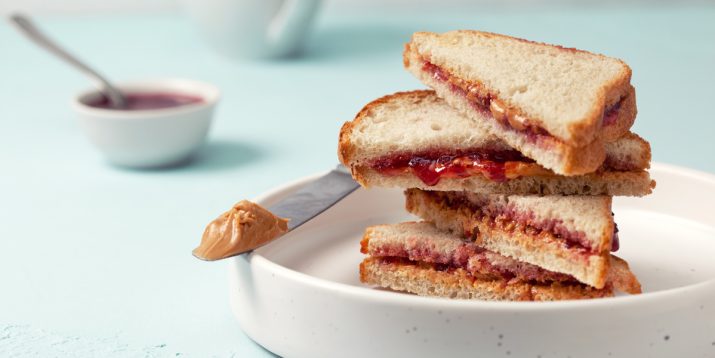
Nothing says comfort food like a good ‘ol PB&J. But are peanut butter and jelly sandwiches healthy? You bet they are! That is… if you make them the right way.
A well-made PB&J not only tastes good, but it also boasts some plant-powered protein, healthy monounsaturated fats, and whole-grain fiber.
Follow these healthy peanut butter and jelly sandwich hacks to help you get the nutrients you need and help maintain a healthy diet.
Are Peanut Butter and Jelly Sandwiches Healthy?
“From a nutritional standpoint, a PB&J sandwich is pretty good,” says Ryan D. Andrews, MS, MA, RD, RYT, CSCS, and author of A Guide to Plant-Based Eating. You’ve got protein, fat, and fiber, all of which can support a healthy diet, he says.
Peanut butter is a good low carb source of protein, packing 7 g in a 2 tbsp. serving, and it’s brimming with vitamin E and minerals, like magnesium, calcium, and potassium.
Peanut butter is also cholesterol free and boasts about 8 g of “good” monounsaturated fat in a 2 tbsp. serving, which “can have a beneficial effect on your heart when eaten in moderation,” according to the American Heart Association. All in all, unless you have a peanut allergy, peanut butter is a safe, nutrient dense, ecologically friendly crop, says Andrews.
And when you choose the right bread — like whole grain, instead of white — you’ll also get a solid dose of fiber that can help keep your digestion regular, make you feel more full, and help you maintain a healthy weight.
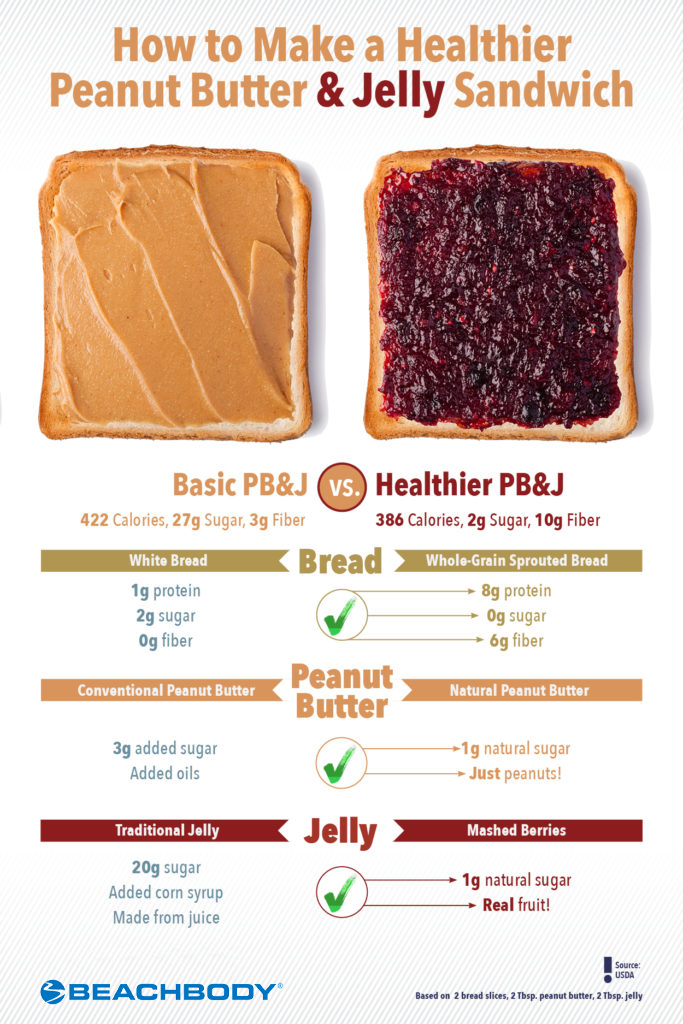
Hacks for Healthier Peanut Butter and Jelly Sandwiches
Not all PB&J’s are created equal. The quality of your ingredient choices will determine just how healthy your sandwich is. The hacks below offer easy alternatives to the traditional highly processed peanut butter with sugared fruit spread on white bread while keeping your nutritional needs and personal taste preferences in mind.
1. Pick the right bread
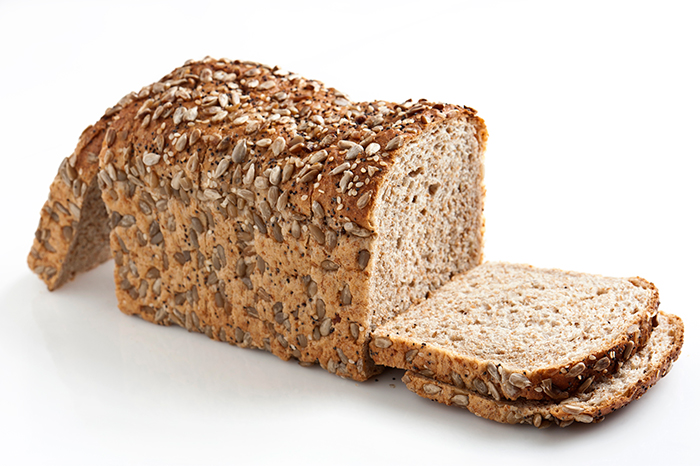
PB&J may have entered your life on fluffy white bread, but those slices have a long list of ingredients that don’t offer much nutritionally. Instead, hack your PB&J with high fiber whole-grain bread. Andrews suggests either whole-grain sprouted bread or whole-grain slow-rise sourdough — both of which are higher in nutrients like amino acids and B vitamins, and lower in antinutrients like phytates than their refined grain counterparts.
Additionally, sprouted and slow-rise sourdough breads tend to be well-digested, says Andrews. If you have FODMAP sensitivities, sourdough can be a particularly good choice because sourdough may increase mineral uptake, decrease glycemic response, and help the bioavailability of fiber. If either of those are too hard to find, says Andrews, “a simple whole-grain bread will do.”
Gone gluten-free? There are still good whole-grain options for those who can’t enjoy traditional bread, but Andrews says that’s only worth it if you have a sensitivity.
2. Select a healthy peanut butter
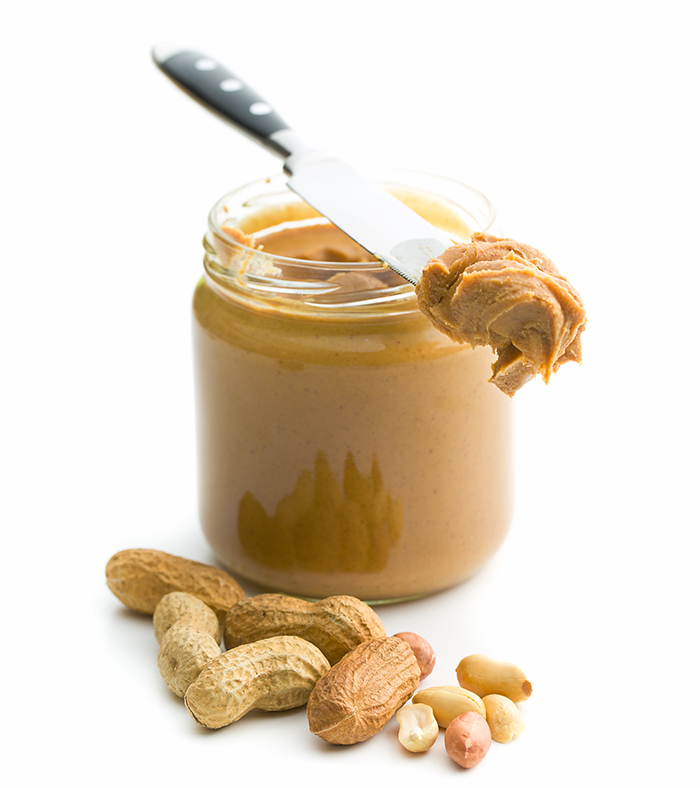
Andrews says that in addition to peanuts, three ingredients are usually added to peanut butter: oil, sugar, and salt. “Old school formulas [like your traditional supermarket finds] often include hydrogenated or partially hydrogenated oil,” he says. For the healthiest PB, you want to avoid peanut butters with those types of added oils, or opt for one without added oil.
Andrews notes that some salt in peanut butter isn’t a big concern unless there is a specific health reason. But otherwise, choose a brand that doesn’t add anything extra to its peanut butter mixture. Meaning… the healthiest option for PB should just be peanuts.
When it comes to choosing organic versus conventional peanut butter, Andrews says there’s not much difference in terms of nutrients like iron or protein. “But there’s a case to be made for organic peanut butter because the farming has fewer chemicals and in general is more sustainable,” he notes.
Prefer an alternative nut or seed butter? Enjoy them at your leisure, says Andrews. Schmear your favorite bread with almond or sunflower seed butter for a new twist on an old favorite. “From a dietary standpoint,” says Andrews, “it’s always a good idea to step up the variety in your diet,” so let your taste buds guide the way.
Just keep in mind that the healthiest option should focus on the main ingredient, be that peanuts, cashews, or sunflower seeds, and not sugar, oils, or preservatives. And always be sure to check that there are ZERO trans fats — as they are our enemy and until a few years ago, they were sadly found in many nut butters.
3. Choose a 100% fruit spread
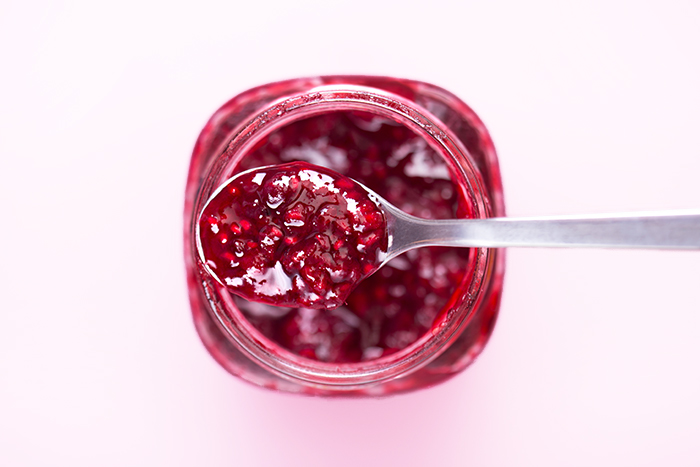
When it comes to topping your peanut butter and jelly sandwich, “the simpler the better,” says Andrews. A 100% fruit spread can help keep your added sugar intake low and give you a sweet treat on your PB&J.
Jams (made from crushed fruit) and jellies (made from fruit juice) already have naturally occurring fructose, so Andrews recommends avoiding brands that add other sweeteners, especially high fructose corn syrup. Andrews acknowledges that a little bit of sugar adds sweetness and helps preserve the fruit, but “try to stay below 4 to 5 grams per serving.”
Even if you’re considering purchasing a light fruit spread that sweetens with sugar substitute, Andrews notes that many artificial sweeteners like sucralose can cause bloating. “If you can avoid them, do so.” Focus on choosing the most natural fruit spread, with the least amount of ingredients. And, use it sparingly, as the sugar and calories add up quickly.
But for your best bet? Just mash up some fresh berries! It can be just as easy to mash up strawberries and spread them on your sandwich as it is to spread on something from a jar.
Other tips
“Listen to your body,” says Andrews. Body size, hunger levels, and physical cues will all contribute to including PB&Js into your healthy diet. Check in with yourself after eating. Are you full? Do you feel like you ate enough? Was your PB&J a snack? A meal? What role does it play in your nutrition that day? With a mix of good, common sense nutrition and your individual needs, you can find a way to enjoy better, healthier peanut butter and jelly sandwiches.
Can You Lose Weight Eating PB&Js?
Good news, sandwich lovers — PB&J can definitely be part of a well-balanced diet, and could help with weight loss! Especially if you follow the healthy hacks mentioned above.
The nutritional value of a PB&J does allow this sandwich to be a part of a well-balanced diet, and it may help with weight loss. Research from Purdue University found that people better managed their weight loss regimens when nuts were included. Andrews also agrees that peanut butter and jelly can support weight loss. But it’s also important to consider what a PB&J would be replacing in your diet. What would you be eating instead?
Whether you choose PB&J over a salad or over fast food matters. There are many food options — both healthier and unhealthier — so Andrews suggest considering how your sandwich habits factor into your nutrition as a whole.
And keep portions in mind, too: “A peanut butter and jelly sandwich can have a reasonable amount of calories, so you’ll want to use common sense to decide whether your sandwich is enough (or too much) for your particular nutrition needs,” notes Andrews.
